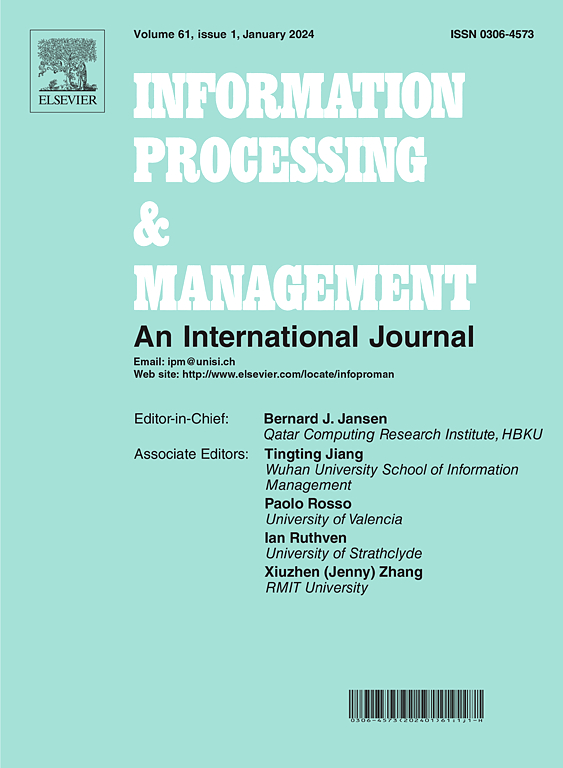Landmark-v6: A stable IPv6 landmark representation method based on multi-feature clustering
IF 7.4
1区 管理学
Q1 COMPUTER SCIENCE, INFORMATION SYSTEMS
引用次数: 0
Abstract
Highly reliable network entity landmarks are crucial for applications like geolocation-aware personalized service recommendations, traceability, and fraud detection. Traditionally, landmark acquisition methods have relied on data mining of rules or network behaviours to establish mappings between IP addresses and geolocation information. However, IPv6 address allocation policies, due to their dynamics and multi-homing phenomenon, pose a risk of IPv6 address deactivation for traditional IPv6 landmarks. To address the issues of reduced numbers and instability in traditional IPv6 landmarks, we propose a novel IPv6 landmark representation method, “landmark-v6”, which is grounded in multi-feature clustering. Firstly, IPv6 addresses are filtered based on multiple attributes derived from network entity fingerprints and routing features. Subsequently, a set of IPv6 addresses is associated with another set through multi-feature clustering. Second, the fine-grained IPv6 addresses are further refined by clustering based on precise physical spatial geolocation information, resulting in candidate landmarks that consist of IPv6 prefixes and geolocation data. Finally, the reliability of these landmarks is determined and evaluated using the voting resolution mechanism in the Candidate Landmark Evaluation task. Our experimental evaluation, spanning 10 months and conducted in three real-world areas, Zhengzhou, Hong Kong, and Shanghai, demonstrates the effectiveness of landmark-v6. Specifically, landmark-v6 obtains 933, 746, and 859 IPv6 prefix landmarks in Zhengzhou, Hong Kong, and Shanghai, respectively. These results surpass those obtained with existing rule or network behaviour-based methods such as Structon, SVMM, and SLG. Landmark-v6 offers a more robust and accurate approach to acquiring IPv6 landmarks, making it well-suited for various applications that necessitate reliable geolocation information. It effectively tackles the challenges posed by the dynamic nature of IPv6 addresses, enhancing both the stability.
Landmark-v6:基于多特征聚类的稳定 IPv6 地标表示方法
高度可靠的网络实体地标对于地理位置感知个性化服务推荐、可追溯性和欺诈检测等应用至关重要。传统的地标获取方法依赖于对规则或网络行为的数据挖掘,以建立 IP 地址和地理位置信息之间的映射关系。然而,IPv6 地址分配政策由于其动态性和多重归属现象,给传统的 IPv6 地标带来了 IPv6 地址停用的风险。针对传统 IPv6 地标的数量减少和不稳定问题,我们提出了一种基于多特征聚类的新型 IPv6 地标表示方法 "landmark-v6"。首先,根据从网络实体指纹和路由特征中提取的多种属性过滤 IPv6 地址。随后,通过多特征聚类将一组 IPv6 地址与另一组地址关联起来。其次,根据精确的物理空间地理位置信息进行聚类,进一步完善细粒度 IPv6 地址,从而产生由 IPv6 前缀和地理位置数据组成的候选地标。最后,在候选地标评估任务中使用投票决议机制确定和评估这些地标的可靠性。我们在郑州、香港和上海三个实际地区进行了为期 10 个月的实验评估,证明了地标-v6 的有效性。具体来说,landmark-v6 在郑州、香港和上海分别获得了 933、746 和 859 个 IPv6 前缀地标。这些结果超过了现有的基于规则或网络行为的方法,如 Structon、SVMM 和 SLG。Landmark-v6 为获取 IPv6 地标提供了一种更稳健、更准确的方法,因此非常适合需要可靠地理位置信息的各种应用。它有效地应对了 IPv6 地址动态特性带来的挑战,同时增强了稳定性。
本文章由计算机程序翻译,如有差异,请以英文原文为准。
求助全文
约1分钟内获得全文
求助全文
来源期刊

Information Processing & Management
工程技术-计算机:信息系统
CiteScore
17.00
自引率
11.60%
发文量
276
审稿时长
39 days
期刊介绍:
Information Processing and Management is dedicated to publishing cutting-edge original research at the convergence of computing and information science. Our scope encompasses theory, methods, and applications across various domains, including advertising, business, health, information science, information technology marketing, and social computing.
We aim to cater to the interests of both primary researchers and practitioners by offering an effective platform for the timely dissemination of advanced and topical issues in this interdisciplinary field. The journal places particular emphasis on original research articles, research survey articles, research method articles, and articles addressing critical applications of research. Join us in advancing knowledge and innovation at the intersection of computing and information science.
 求助内容:
求助内容: 应助结果提醒方式:
应助结果提醒方式:


